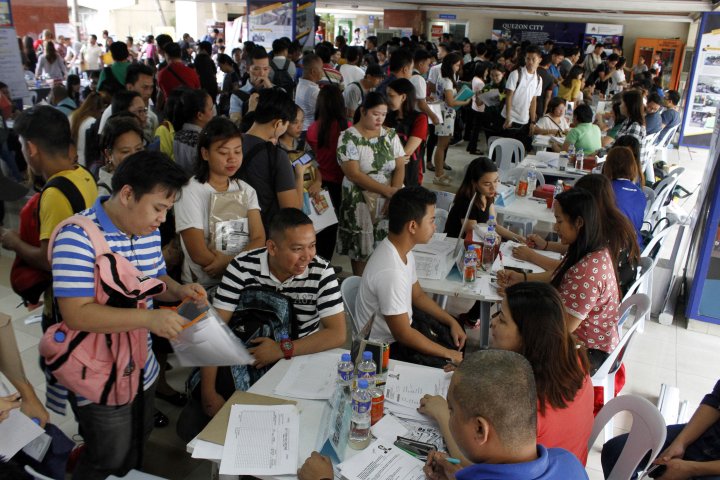
Research group IBON said that the jobs crisis in the country is getting more severe under the Duterte administration. The group said that the government should be more forthright and admit growing economic insecurity from inflation and joblessness rather than keep trying to downplay this. Millions of Filipinos are jobless, including those excluded from official unemployment figures, or have jobs but endure poor quality work.
IBON said that there are less jobs available now compared to the start of the Duterte administration. The number of employed Filipinos has fallen by 295,000 from 40.95 million in July 2016 to just 40.67 million in July 2018. This is largely due to a huge 1.8 million drop in agricultural employment over that period. Job losses and expensive food characterize the crisis in the agricultural sector.
IBON pointed out that job creation in the rest of the economy was not enough to compensate for the huge job losses especially in agriculture. There were gross job losses of 2.2 million between July 2016 and July 2018 but only 1.9 million in gross job creation, hence the 295,000 drop in the number of employed.
Moreover, the group said, the biggest job generation is in sectors that do not necessarily indicate a strong economy. The largest part of additional employment since July 2016 was in the public sector where 500,000 jobs were created, followed by construction with 393,000 in likely mostly short-term work. These were followed by 269,000 jobs in manufacturing which is potentially important but barely 14% of gross job creation in the last two years.
IBON stressed that net job creation in the economy is feeble. Only 488,000 additional jobs were generated in July 2018 from the year before. This is less than the 701,000 jobs created on average annually in the decade 2006-2015 prior to the Duterte administration. It was also not enough to make up for the huge 783,000 jobs lost in July 2017 from the last year, hence net job losses since the start of the administration.
This crisis is obscured in the official statistics because millions of discouraged workers are no longer counted as unemployed even if they are jobless and are just statistically dropped from the labor force, said the group. Combined with the effect of K-12 implementation in senior high school (SHS) since 2016, the labor force participation rate has dropped to 60.1% in July 2018 which is the lowest in 36 years or since 1982.
There are also signs that the quality of work is drastically worsening, said IBON. The number of underemployed or those with jobs but seeking additional work increased by 464,000 in July 2018 from the year before to reach 7 million. The underemployment rate has correspondingly risen to 17.2% from 16.3% last year.
The current jobs crisis consists of the millions of jobless Filipinos including those who are no longer officially counted as unemployed and the millions of Filipinos who have jobs but suffer poor quality work that is not enough to live securely and decently. As it is, IBON conservatively estimates at least 11.3 million unemployed (4.3 million) and underemployed (7.0 million) Filipinos as of July 2018 which is one in four (25%) of the labor force.
IBON said that amid skyrocketing prices and inflation, it is more urgent than ever to ensure sustainable and decent employment for millions of Filipinos. The only long-term solution is for the government to invest in genuinely developing domestic agriculture and Filipino industries. ###